How to Grow Your Practice Through Telehealth with Reimbursement Considerations
As the COVID-19 outbreak continues to surge, physicians and other healthcare providers are moving towards telehealth and remote patient monitoring to reduce in person contact and to stop the spread of the virus. To support physicians and other healthcare providers, CMS has also eased restrictions on telehealth reimbursements.
eHI Virtual Lunch Series: A Conversation with Rachel Nelson from ONC
eHI Virtual Lunch Series: A Conversation with Rachel Nelson from ONC
As we all adjust to teleworking during the COVID-19 pandemic, eHI is working to bring members more virtual learning opportunities.
You’ve probably noticed that we’ve scheduled more webinars – and now we’re launching a series of short, virtual conversations with health IT leaders.
Join eHI CEO Jennifer Covich Bordenick for a conversation with Rachel Nelson, Branch Chief, Policy Analysis and Implementation, Regulatory Affairs Division at ONC as we launch this virtual series. Jennifer will be discussing the ONC information blocking final rule with Rachel and taking participant questions.
You can watch the full video here and download the slides below.
Virtually Perfect? Telemedicine for COVID-19
Previous work has specifically described the potential for using telemedicine in disasters and public health emergencies. No telemedicine program can be created overnight, but U.S. health systems that have already implemented telemedical innovations can leverage them for the response to COVID-19.
A Framework for Evaluating the Return on Investment of Telehealth
Healthcare providers are increasingly investing in and deploying telehealth capabilities that will extend services to patients in rural areas, deliver higher-quality care to individuals with complex conditions, and reduce costs associated with unnecessary emergency department (ED) visits, transfers and admissions, among other benefits.
Telehealth programs require institutions to make upfront investments in technology, program design and staffing. While payers are increasingly expanding coverage for telehealth services, receiving reimbursement across all payers at a level commensurate with costs continues to be a challenge. To that end, providers are eager to think beyond reimbursement and understand the potential comprehensive return on investment (ROI) of various telehealth programs.
The ROI of telehealth programs can vary dramatically based on the size, nature, clinical capacity and payment model of the organization. For instance, academic medical centers (AMCs) typically have a highly specialized workforce that treats high-acuity patients across a wide range of clinical domains. In contrast, many community hospitals are smaller, have a more generalized workforce and may not provide comprehensive services at all hours of the day. Similarly, an integrated healthcare delivery system that operates on a value-based versus a fee-for-service basis may be more interested in the cost-saving potential of telehealth programs. The characteristic differences of these institutions make their ROI considerations around various telehealth investments fundamentally different, as summarized in Table 1.
Since the decision to invest in telehealth is highly dependent on institutional objectives and the estimated financial impact of the telehealth program, this brief has been developed with the following aims:
• To propose a framework for calculating the ROI of a given telehealth program;
• To demonstrate how this framework can be applied to two distinct telehealth case studies; and
• To illustrate the financial impact of these specific telehealth programs.
Webinar Presentation: Rapidly Deployed Remote Monitoring for COVID-19
Americans have been encouraged to limit visits to doctors and hospitals in order to ease the burden on medical staff and reduce the risk of exposure to others.
Please join our discussion to hear how a hospital in Israel and a 5-hospital health system have deployed a remote monitoring system to manage patients at home and also coordinate with public health officials.
A recording of the webinar and the presentation slides can be found at the bottom of this page.
Speakers:
Levi Shapiro
Founder, mHealth Israel
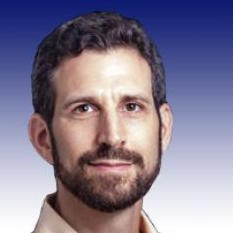 Levi Shapiro is Head of the Digital Health Program at Hebrew University’s BioMED MBA program. He is the Founder of mHealth Israel, a non-profit with 7,500 members, supporting the Israeli digital health technology community. He writes about healthcare and technology for publications including Jerusalem Post, holds Board positions with Israeli health technology startups and provides strategic advisory to prominent US companies. In a career spanning Beijing, Tokyo, Milan and Tel Aviv, Mr. Shapiro launched new business units (IBM), new products and services (Toyota) and a variety of technology startups. He is an investor and Board Member in Israeli health tech startups and formerly a General Partner in an Israel-based venture capital firm. Mr. Shapiro holds degrees from Tulane (BA), Cornell (Asian Studies) and MIT (MBA).
Levi Shapiro is Head of the Digital Health Program at Hebrew University’s BioMED MBA program. He is the Founder of mHealth Israel, a non-profit with 7,500 members, supporting the Israeli digital health technology community. He writes about healthcare and technology for publications including Jerusalem Post, holds Board positions with Israeli health technology startups and provides strategic advisory to prominent US companies. In a career spanning Beijing, Tokyo, Milan and Tel Aviv, Mr. Shapiro launched new business units (IBM), new products and services (Toyota) and a variety of technology startups. He is an investor and Board Member in Israeli health tech startups and formerly a General Partner in an Israel-based venture capital firm. Mr. Shapiro holds degrees from Tulane (BA), Cornell (Asian Studies) and MIT (MBA).
Al Kinel
President, Strategic Interests, LLC
 Al Kinel is founder and President of Strategic Interests, LLC, a consulting firm dedicated to transforming healthcare through innovation. Al and his firm works with health systems, health plans, providers, collaboratives and vendors on strategies and initiatives to create a long-lasting, positive impact through the innovative use of IT. Al spent the formative years of his career with top-tier professional services firms and was a leader in technology management for Xerox and Kodak/Carestream Health. At Carestream he was VP of Corporate and Government Healthcare where he managed commercial activities with Kaiser, VA, and others, and successfully lobbied to accelerate health data and image exchange. Al is a thought-leader, community activist, and catalyst who is active at a local, state, and national level with organizations including eHealth Initiative where he serves on the Leadership Council. As a volunteer, he initiated the concept of the Rochester RHIO, and attained alignment and funding from community stakeholders and NY State.
Al Kinel is founder and President of Strategic Interests, LLC, a consulting firm dedicated to transforming healthcare through innovation. Al and his firm works with health systems, health plans, providers, collaboratives and vendors on strategies and initiatives to create a long-lasting, positive impact through the innovative use of IT. Al spent the formative years of his career with top-tier professional services firms and was a leader in technology management for Xerox and Kodak/Carestream Health. At Carestream he was VP of Corporate and Government Healthcare where he managed commercial activities with Kaiser, VA, and others, and successfully lobbied to accelerate health data and image exchange. Al is a thought-leader, community activist, and catalyst who is active at a local, state, and national level with organizations including eHealth Initiative where he serves on the Leadership Council. As a volunteer, he initiated the concept of the Rochester RHIO, and attained alignment and funding from community stakeholders and NY State.
Bridgette Wiefling, MD
Senior Vice President Primary Care, Advanced Solutions Institute, Rochester Regional Health
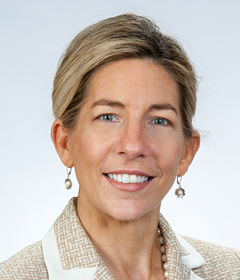 Dr. Wiefling is a practicing internal medicine physician at Rochester Regional Health. In her current role as senior vice president, she is responsible for building a robust primary care network that is adaptive to new challenges and opportunities in health care. She plays a critical role leading the Rochester Regional delivery system transformation under the evolution of new payment models. She spearheads innovative strategies and technology to redesign delivery of medical services in a way that reduces cost and improves quality while integrating care across the continuum. Dr. Wiefling has served in multiple leadership roles for the system, including chief quality officer and senior vice president and executive director of the Rochester General Medical Group. Prior to joining Rochester Regional, she was the CEO of the Anthony L. Jordan Community Center.
Dr. Wiefling is a practicing internal medicine physician at Rochester Regional Health. In her current role as senior vice president, she is responsible for building a robust primary care network that is adaptive to new challenges and opportunities in health care. She plays a critical role leading the Rochester Regional delivery system transformation under the evolution of new payment models. She spearheads innovative strategies and technology to redesign delivery of medical services in a way that reduces cost and improves quality while integrating care across the continuum. Dr. Wiefling has served in multiple leadership roles for the system, including chief quality officer and senior vice president and executive director of the Rochester General Medical Group. Prior to joining Rochester Regional, she was the CEO of the Anthony L. Jordan Community Center.
Uri Bettesh
Founder and CEO at Datos
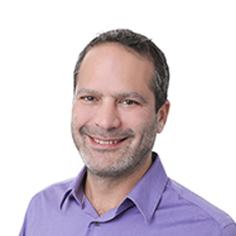
Mr. Uri Bettesh brings with him over 18 years of experience as a technology executive and a passionate entrepreneur with a proven track record of success in leading business operations and technology implementations. Uri is a visionary leader with the ability to initiate and execute innovative strategies, engage with highly professional management teams and lead to results in a fast-changing business environment. Uri brings his passion for technology to healthcare where he has demonstrated an ability to work with HMOs, leading health systems, and the Ministry of Health in Israel to deliver solutions to transform healthcare. He is now focused on bringing these capabilities to the US and other regions of the world. Prior to Datos, he served in various executive positions, such as GM of NCR Food Drug & Mass Merchandising division, VP Product of Retalix, and more. Uri holds a BSc in Industrial Engineering and a master’s degree in System Engineering both from the Technion, Israel Institute of Technology.
Webinar Presentation: Coronavirus: Can Artificial Intelligence Make A Difference?
The US health system is at the brink of operating at above capacity and healthcare organizations need clarity on how to address COVID-19 risk within their population and their community more broadly. AI has the ability to deliver intelligence that can assist national response to COVID-19 by : giving insights into which hospitals will have similar experiences and impacts; identifying expected relative risk across geographies; surface high-risk patient populations; and provide clinicians with point-of-care clinical decision support.
Please join us while we discuss some important developments in AI with real-world examples and how providers and communities can apply them to drive optimal outcomes during times like these.
Presentation recoding, slides, and additional resources are present at the bottom of this page.
Speakers:
Lori Tremmel Freeman
Chief Executive Officer, NACCHO
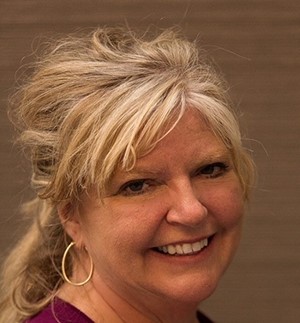 Lori Freeman is the Chief Executive Officer (CEO) at the National Association of County and City Health Officials (NACCHO), effective May 1, 2018. Prior to joining NACCHO, Ms. Freeman served as the CEO of the Association of Maternal & Child Health Programs (AMCHP) since 2014 where she was responsible for ensuring the success of all AMCHP’s operations. Ms. Freeman has developed and overseen cooperative agreements and grants with a variety of government agencies and private foundations including procuring, planning, developing and implementing annual and multiyear grant proposals. Throughout her tenure in nonprofit management, she has contributed widely in senior managerial roles in strategic planning and visioning, building relationships and partnering opportunities, membership and new business development, foundation start-up and fundraising, the creation of benefits and services, use of technology to advance organizations, event turnaround, and program management.
Lori Freeman is the Chief Executive Officer (CEO) at the National Association of County and City Health Officials (NACCHO), effective May 1, 2018. Prior to joining NACCHO, Ms. Freeman served as the CEO of the Association of Maternal & Child Health Programs (AMCHP) since 2014 where she was responsible for ensuring the success of all AMCHP’s operations. Ms. Freeman has developed and overseen cooperative agreements and grants with a variety of government agencies and private foundations including procuring, planning, developing and implementing annual and multiyear grant proposals. Throughout her tenure in nonprofit management, she has contributed widely in senior managerial roles in strategic planning and visioning, building relationships and partnering opportunities, membership and new business development, foundation start-up and fundraising, the creation of benefits and services, use of technology to advance organizations, event turnaround, and program management.
John Frownfelter, MD
Chief Medical Information Officer, Jvion
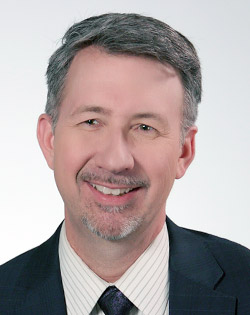 John is an internist and physician executive in Health Information Technology and is currently leading Jvion’s clinical strategy. With over 15 years’ leadership experience he has a broad range of expertise in systems management, care transformation and health information systems. Dr. Frownfelter has held a number of medical and medical informatics leadership positions over nearly two decades, highlighted by his role as Chief Medical Information Officer for Inpatient services at Henry Ford Health System and Chief Medical Information Officer for UnityPoint Health where he led clinical IT strategy and launched the analytics programs. Since 2015, Dr. Frownfelter has been bringing his expertise to healthcare through health IT advising to both industry and health systems. His work with Jvion has enhanced their clinical offering and their implementation effectiveness. Dr. Frownfelter has also held professorships at St. George’s University and Wayne State schools of medicine, and the University of Detroit Mercy Physician Assistant School. Dr. Frownfelter received his MD from Wayne State University School of Medicine.
John is an internist and physician executive in Health Information Technology and is currently leading Jvion’s clinical strategy. With over 15 years’ leadership experience he has a broad range of expertise in systems management, care transformation and health information systems. Dr. Frownfelter has held a number of medical and medical informatics leadership positions over nearly two decades, highlighted by his role as Chief Medical Information Officer for Inpatient services at Henry Ford Health System and Chief Medical Information Officer for UnityPoint Health where he led clinical IT strategy and launched the analytics programs. Since 2015, Dr. Frownfelter has been bringing his expertise to healthcare through health IT advising to both industry and health systems. His work with Jvion has enhanced their clinical offering and their implementation effectiveness. Dr. Frownfelter has also held professorships at St. George’s University and Wayne State schools of medicine, and the University of Detroit Mercy Physician Assistant School. Dr. Frownfelter received his MD from Wayne State University School of Medicine.
Priyanka Surio
Director of Informatics, ASTHO
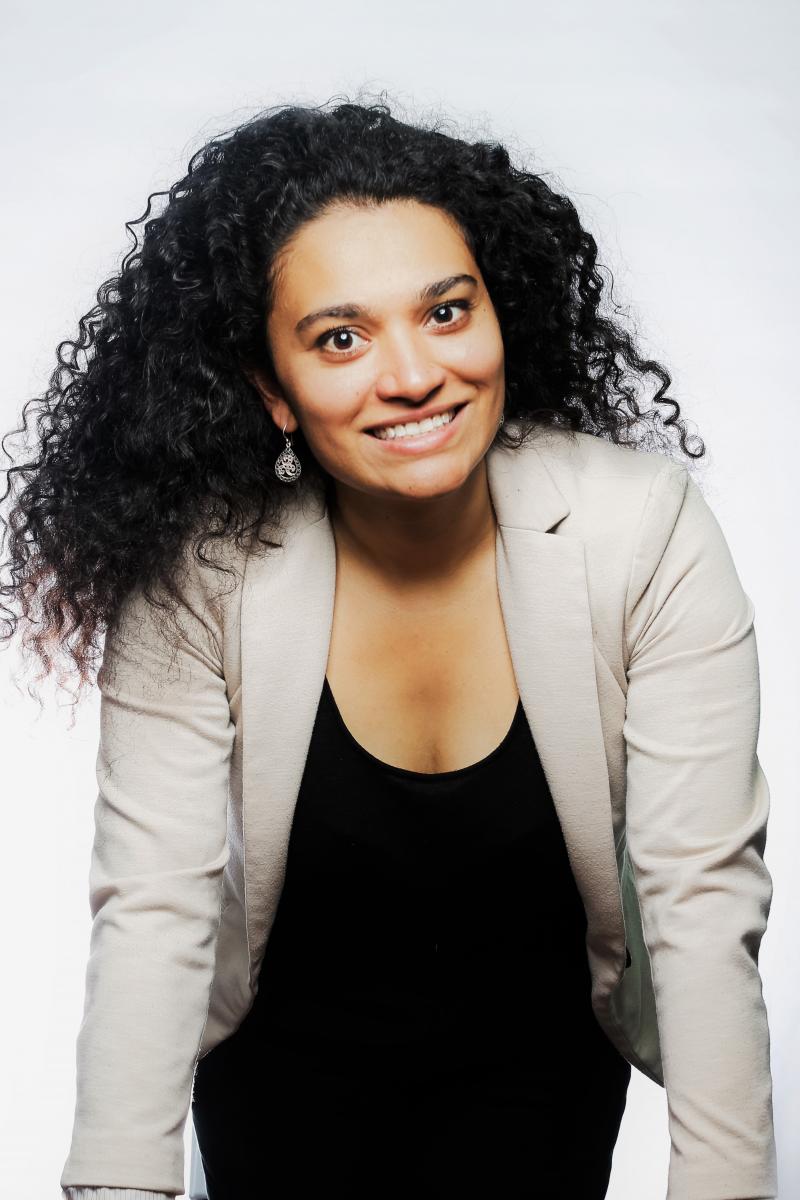 Ms. Surio currently serves as the Director of Data Analytics and Public Health Informatics within ASTHO’s Center for Population Health Strategies where she manages the Informatics project portfolio across ASTHO. Projects address population health issues for state and territorial health departments and include work in data linkages, disease surveillance, data partnerships for violence prevention and electronic case reporting, and building health IT/informatics and disease surveillance capacity through strategic planning and workforce development. Ms. Surio is an accomplished leader with 7+ years of experience in healthcare systems process improvement and expertise in project management, research methods, statistical analytics, and health education and policy.
Ms. Surio currently serves as the Director of Data Analytics and Public Health Informatics within ASTHO’s Center for Population Health Strategies where she manages the Informatics project portfolio across ASTHO. Projects address population health issues for state and territorial health departments and include work in data linkages, disease surveillance, data partnerships for violence prevention and electronic case reporting, and building health IT/informatics and disease surveillance capacity through strategic planning and workforce development. Ms. Surio is an accomplished leader with 7+ years of experience in healthcare systems process improvement and expertise in project management, research methods, statistical analytics, and health education and policy.
John Showalter, MD
Chief Product Officer, Jvion
 Dr. Showalter brings visionary thought leadership on the application of advanced information technology to improving outcomes for patients. His unique education in biomedical engineering, physiology, clinical informatics and internal medicine has allowed him to work at the intersection of those fields to positively impact patient care and health system efficiency. His work has been recognized with cross-industry awards including ComputerWorld's Premiere 100 IT Leaders and health IT awards such as the CHIME Collaboration Award. Dr. Showalter is dedicated to using his passion and knowledge to ensure that Jvion's machine has the maximum positive impact for patients.
Dr. Showalter brings visionary thought leadership on the application of advanced information technology to improving outcomes for patients. His unique education in biomedical engineering, physiology, clinical informatics and internal medicine has allowed him to work at the intersection of those fields to positively impact patient care and health system efficiency. His work has been recognized with cross-industry awards including ComputerWorld's Premiere 100 IT Leaders and health IT awards such as the CHIME Collaboration Award. Dr. Showalter is dedicated to using his passion and knowledge to ensure that Jvion's machine has the maximum positive impact for patients.
Webinar: Telehealth during COVID-19: New strategies on how physicians are addressing the outbreak
In the wake of the current situation with COVID-19, physicians and other healthcare providers are rapidly adopting workflows for telehealth to triage incoming patients to determine and evaluate risk, reduce non-emergent office visits, remotely monitor patients and more.
Join us for a panel discussion on implementing telehealth workflows to meet the need for quick change and continuity of care. Presenters include a CTO for a county health system, a physician, and a provider of telehealth technology.
Speakers:
Mark Filiault
Coronavirus response could give long-awaited jolt to telehealth
COVID-19 response could give long-awaited jolt to telehealth
Telehealth may be about to boom as federal officials push doctors to video chat with patients, hoping to reduce stress on hospitals preparing for a flood of coronavirus cases.
The Trump administration has used the president's national emergency declaration and an emergency funding package to lift key barriers to virtual care, including rules that limited payments for telehealth visits and blocked the use of popular video messaging platforms like FaceTime over privacy concerns. Many private insurers appear to be quickly following suit, raising the prospect that remote consultation could become the new normal long after the crisis subsides.
The full Politico article can be viewed at this link.
Telemedicine has a big role in the coronavirus fight, but doctors say the laws remain murky
Telemedicine has a big role in the coronavirus fight, but doctors say the laws remain murky
As part of its effort to extend health services to seniors, the Trump administration announced a major expansion of telemedicine options, allowing Americans enrolled in Medicare to talk to a doctor by phone or video chat for no additional cost.
States including Massachusetts and Florida have also expanded telehealth coverage amid the COVID-19 crisis to make it easier for doctors and patients to connect online and to ensure that physicians get paid. Washington is among states moving to let doctors volunteer to treat patients even if they’re not licensed in the state as long as they can legally practice elsewhere.
More than 260 doctors have already volunteered, though it will take time for them to be vetted, said Stephanie Mason of the Washington State Medical Commission. Getting licensed in other states can still take months and cost tens of thousands of dollars.
The coronavirus, which as of Wednesday has infected more than 6,400 people in the United States, killing at least 114, is threatening to overwhelm the U.S. health system in the coming weeks, creating a need for increased use of remote health services. But a patchwork of state-by-state regulations and a lack of clarity about what’s allowed is causing telemedicine providers to move cautiously. Health plans, meanwhile, aren’t moving as quickly as the federal government to reimburse doctors.
The full CNBC article can be viewed at this link.
What America can learn from China’s use of robots and telemedicine to combat the coronavirus
What America can learn from China’s use of robots and telemedicine to combat the coronavirus
After a passenger infected with the novel coronavirus boarded the Diamond Princess cruise ship in January, the virus quickly spread, eventually infecting at least 712 and killing seven. Critics labeled the ship quarantined in Yokohama a floating petri dish, and at least one Japanese expert attributed the explosion of cases to food trays passed out by infected crew. Could robots have made a difference?
As countries around the world grapple with COVID-19, front line medical workers are deploying robots, telemedicine and other technologies to help contain the pandemic. China and Spain have used drones to monitor people during lockdown campaigns, while South Korea has deployed them to help disinfect areas in Daegu, an epidemic hotspot. Antwork, a group company of Japanese industrial drone maker Terra Drone, flew medical samples and quarantine materials in China’s Xinchang in February during the height of the epidemic.
Earlier this month, a field hospital staffed by robots opened in the Hongshan Sports Center in Wuhan, China, where the pandemic began. Dubbed the Smart Field Hospital, the facility is a project involving Wuhan Wuchang Hospital, China Mobile and CloudMinds, a maker of cloud robotics systems based in China and the U.S. The Smart Field Hospital is a trial aimed at relieving exhausted health-care workers even as the outbreak in China slowed in recent weeks.
The full CNBC article can be viewed at this link.
